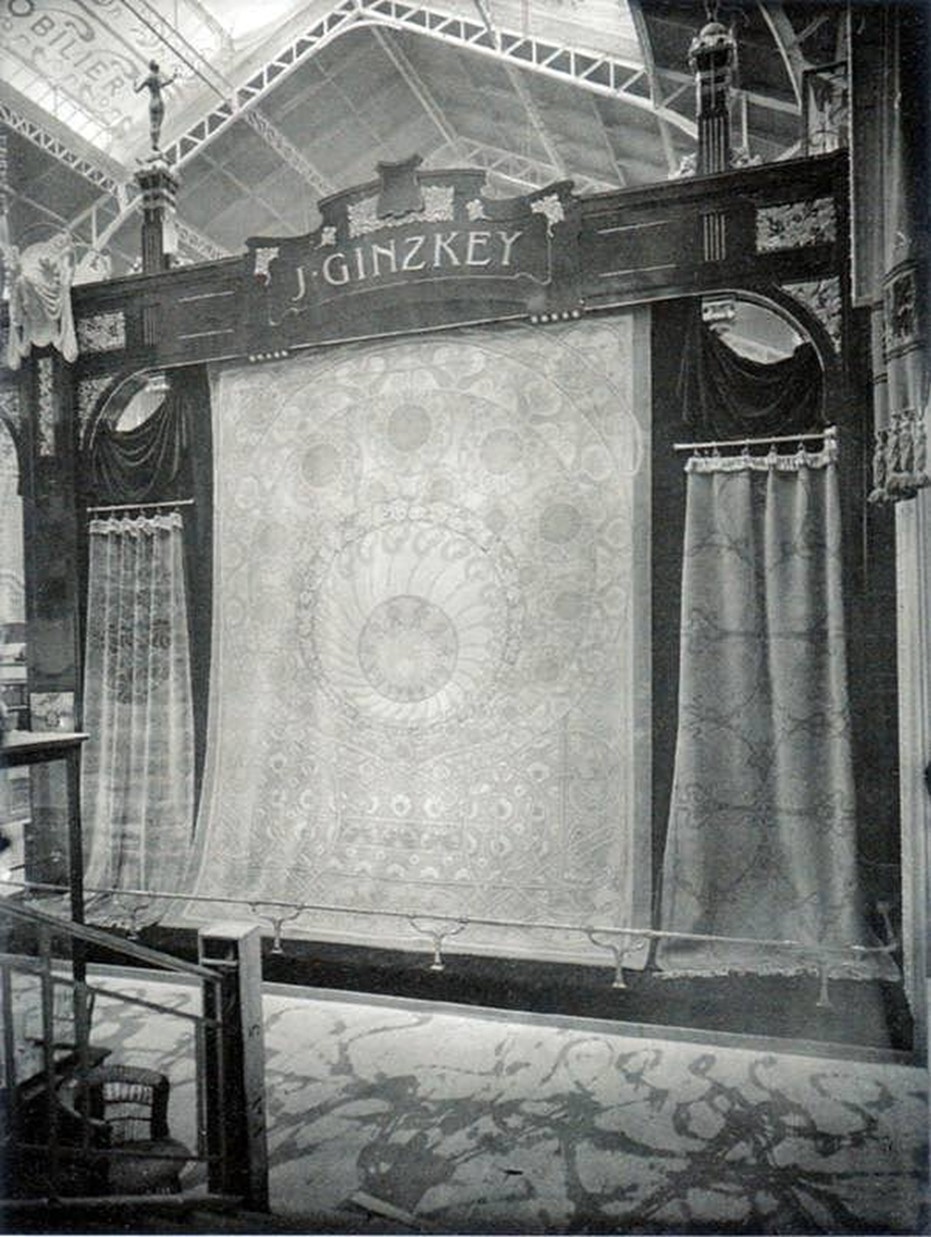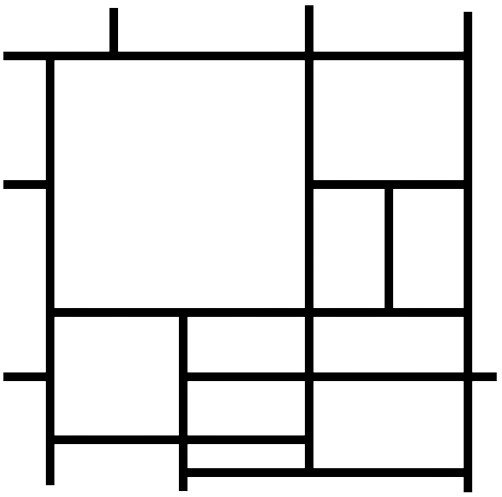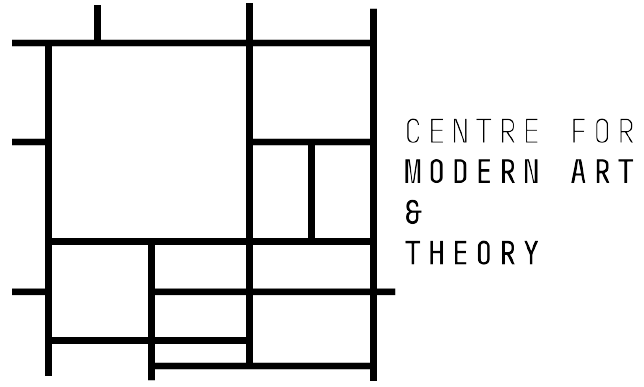Julian Adoff
Beyond Nation(s) and Empire(s): Cross-Cultural Networks and the Entrepreneurship of Late-Habsburg National Identity
Julian Adoff
Beyond Nation(s) and Empire(s): Cross-Cultural Networks and the Entrepreneurship of Late-Habsburg National Identity
Written by Julian Adoff, a doctoral student at the University of Illinois Chicago and hosting member of the Centre for Modern Art & Theory, present article introduces his dissertation project Beyond Nation(s) and Empire(s): Cross-Cultural Networks and the Entrepreneurship of Late-Habsburg National Identity. Focusing on Alfons Mucha as an entry point, the research reconsiders Central European modernism not through narrow nationalist frames but as the product of cross-cultural networks that blurred the boundaries between nations and empire in the late Habsburg world.

A. Mucha & J. Ginzkey, Installation View of Carpet Tapestry at the Exposition Universelle (1900)
I am a doctoral student in art history at the University of Illinois Chicago (UIC), where my research focuses on challenging the dominance of art historical methodologies that favor a Western European perspective on art. As a part of this research, I focus on artists born across the Habsburg Empire. I have been a member of the Center for Modern Art & Theory at Masaryk University since September 2024, while in residence in the Czech Republic, as I conduct research for my dissertation, Beyond Nation(s) and Empire(s): Cross-Cultural Networks and the Entrepreneurship of Late-Habsburg National Identity. My first 5 months in residence at the Centre were funded by my home institution (UIC). At the start of 2025, I was given the opportunity to stay at the Centre as a Fulbright-Hays Doctoral Dissertation Research Award Fellow. My time at the Centre has been spent working collaboratively with the other members of the Centre, and travelling around the Czech Republic and surrounding countries, visiting archives and meeting with specialist researchers.
My dissertation seeks to define a network of multinational artists in the final decades of the Austro-Hungarian Empire. The social and political makeup of the Austro-Hungarian Empire permitted a fungibility of identity, which allowed artists to operate within and between multiple seemingly divergent identities simultaneously. Rather than simply rehashing questions of identity, culture, and the nation along lines that replace ethnicity with something else, this project seeks to get to the root of what it meant to live and work in an empire that fostered international cooperation. The network of artists, architects, patrons, and arts workers defined here simultaneously contributed to the development of late-Habsburg Imperial Modernism and left their mark indelibly on developing their national styles, often complicating a more international reading of their work.
Czech artist Alfons Maria Much (1860–1939) is my entry point into this network and the initial artist I seek to utilize to find how Habsburg artists found themselves entangled with each other. In the US and Western Europe, Mucha is perhaps best known for the commercial design work he completed in Paris. While Mucha’s art has been described as purely decorative, or, in the case of his later, nationalist work, largely irrelevant out of its short pre-WWI context, I believe discussing his work as engaging in a multinational and cross-cultural network is more accurate. By utilizing him as the center point of this network, this study will recontextualize the well-known but misunderstood artist while simultaneously offering a revision of nationalist art at a time of nationalist resurgence. Mucha, as with other members of this network, has also seen their histories mythologized, and tales of their artistic exploits have also been embellished as a part of either their nationalization or by their families as they have tried to solidify their legacies, offering fascinating, but also challenging dynamics to uncover the true nature of their networks.
My time at the Centre, and in Central Europe in general, has been invaluable. I have made numerous trips to the Prague City Archive in order to conduct research into various buildings erected in the city in the early 1900s, visited Liberec to meet with scholars who study Austrian manufacturer J. Ginzkey, and travelled to Vienna and Budapest to find works of art and architecture that fit into my dissertation project. As a part of my Fulbright Hays award, I spent the month of March in Krakow and will be returning to Poland for a second month this fall. While I was in Poland in the spring, I made initial contact with numerous research institutions and conducted introductory archival visits in order to expand my research into the cross-cultural networks I seek to delineate in my dissertation. I have posted and will continue to post more detailed descriptions of my research travels on my research blog. In what remains of this post, I will share some materials with you about the conceptual framework of my dissertation.

A. Mucha, Carpet Design for Ginzkey’s Participation in Exposition Universelle (1899)
A carpet designed by Alfons Mucha, comprised of rich blues and browns, accentuated by green whiplash vines and multicolor flora, blurred the boundaries between the Austrian and Hungarian displays featured in the exhibition of decorative arts and furniture along the Esplanade des Invalides during the Exposition Universelle in Paris in 1900. The Moravian-born artist had been living in Paris since 1888 and, by 1894, had shifted the landscape of decorative art in the city. The Austrian manufacturer J. Ginzkey (located in Maffersforf, Bohemia, today Vratislavice, Czech Republic) commissioned Mucha to design a carpet that would expand the stylistic offerings of the factory. Known for its oriental-style carpets, Ginzkey wished to introduce art nouveau-style carpets to the business’ offerings. As such, the vibrant pastels, sinewy, undulating vines, and rich use of circular forms that were prominent in Mucha’s Parisian posters appear in this carpet designed in Austrian Bohemia and presented to the world in Paris, though they tell a very different story than his decorative work had become known for; taking on an important rhetorical role in the exhibit from its place between two exhibition spaces for the dual Austro-Hungarian monarchy.
With Mucha’s design for the Ginzkey carpet, which hung as a tapestry in a decorative archway between Hungarian and Austrian representations in an exhibition along the Esplanade des Invalides during the Exposition Universelle, we see a form of Austro-Slavism in action. Rebecca Houze concludes that Mucha “in effect blurr[ed] the lines between the two exhibits.” (1) Recalling the concepts of Austro-Slavism and Vincenc Kramář conception of Czech art, Mucha’s work, even this carpet design, can be understood simultaneously as “Czech” as he held the spirit of Czech culture in mind during its creation and Imperial. (2) Mucha’s utilization of circles and prosperous flora here has a deeper meaning and represents the Habsburg lands themselves. In a series of lectures on art that Mucha gave between 1905 and 1909 in New York and Chicago, he spoke of the importance of the circle for the harmony, beauty, and peace of the work of art. (3) In these lectures, Mucha went into detail on how he created his advertisements and decorative prints. Topics of the lectures focused on his commissions featuring humans, noting that circles almost always surround his figures in order to give them a sort of halo of divine protection; a practice that he will take on a different meaning once he begins creating work directly responding to Czech and Slavic matters. Mucha created three distinct circular fields within this main circle, perhaps referencing the three regions of the empire: the Austrian Cisleithania, the Hungarian Transleithania, and the Austro-Hungarian Condominium of Bosnia and Herzegovina. These overlapping circles of blues and yellows are concentric and further reinforce the concepts of multiplicity over hierarchy, for each section comprises additional elements. For instance, two rows of circular decorative motifs fill this circle slice. Mucha utilized a variety of floral motifs in the carpet, though each section has its distinctive flora. A known reader of Herder’s nationalist texts, it is not a stretch to connect Mucha’s numerous floral motifs to Herder’s concept of the national forest. All in all, Mucha’s carpet design features a richly composed call for harmony in the empire, both in its design as well as in its method of display and framing along the Esplanade des Invalides.
Mucha’s commissions for the 1900 Exposition Universelle in Paris serve as a major and lasting point of departure for the dissertation. In addition to the Ginzkey carpet, Mucha was commissioned by Vienna to help decorate the Bosnia and Herzegovina Pavilion. As a part of the soft diplomacy to sway public opinion in favor of Austria’s recent acquisition of the region from the Ottomans, Mucha engaged within the colonial apparatus, much like the fellow Czech architect Karel Pařík, who designed the pavilion as well as at least 150 buildings in Sarajevo. Mucha and Pařík’s work for the Bosnian pavilion (as well as Pařík’s Sarajevo works) points to one of the key concepts of the dissertation. Much of the works that can be connected to each other in the formation of this network seem out of place when placed side-by-side. A series of contradictions defines this form of late-Habsburg modernism and can be used to bring together artists within this network. I argue that Mucha’s artwork can be interpreted as being completed at the meeting place of three dialectical binaries: nationalism/internationalism, commercialism/fine art, and science/esoterica. The changing modern world was the cause of these binary distinctions. It was in his membership in the Masonic Order that Mucha found a functional synthesis for the three binaries. The symbolic referents of Masonry gave Mucha a new language that proved to be useful organizing principles for his views of nature, nationalism, and the nation’s role in an international world.
As an American scholar studying a region of the world that rarely gets attention in US-based academia, I have long been fascinated by Piotr Piotrowski’s horizontal art history methodology—where Central European art must be studied through heterogeneous narratives that do not coalesce—to form this network through educational affiliations, membership in artist groups, and patrons. I also consider how these figures engaged in a more entrepreneurial conception of building the nation versus the more expected Romanticist exploration of “nationhood.” As such, this project draws out a network of collaboration and monetary assistance shared amongst artists who would go on to represent their divergent nation-states’ canon. Piotrowski’s methods, while theoretically relevant, leave some gaps when it comes to how we can enact a non-vertical art historical methodology as well as how we can effectively engage in this program that challenges the perceived universality of the Western center. (4) One of the recent calls around the reconsideration of Piotrowski’s method, found in an edited volume on Plural and Multiple Geographies, was to engage in acts of critical geography to ensure a flexible reading of Central European geography. (5) The contributor’s goals were to underline the horizontality of East-Central European modern art and highlight the multiplicity of definitions, concepts, and artworks found in the region. I have found that the concept of histoire croisée, otherwise known as entangled history, offers a great way to do this. Central to histoire croisée is the belief that multiple viewpoints should be studied, allowing the “divergences resulting from [differences in] languages, terminologies, categorizations, and conceptualizations, traditions, and disciplinary usages” to add dimension to the study. (6) The object of study when the method of histoire croisée is employed is “constituted at the meeting point or intercrossing among various historical contexts,” as Jeffrey D. Burson writes. (7)
The network I seek to define through Mucha extends within and outside the empire. Within the empire, the artists Stanisław Wyspiański (Polish), Józef Mehoffer (Polish), Jan Matejko (Polish), Maximilian Pirner (Czech), Mikoláš Aleš (Czech), and Joža Úprka (Czech) combine with architects Ödön Lechner (Hungarian), Wilhelm Stiassny (Austrian/Jewish), and the duo Marcell Komor & Dezső Jakab (Hungarian/Jewish). Outside the empire, key figures in this expanded network include the French jeweler Georges Fouquet, French painter Pierre Puvis de Chavannes, and American businessman Richard Charles Crane. While the artists who make up this network worked within a variety of media, Beyond Nation(s) and Empire(s) focuses on their large-scale projects that demanded widespread public engagement, either through extravagant public buildings or through large-scale painting projects. The common, overlapping themes of folk origins, romanticism, religion, and the interplay between nationalism and internationalism play a key role in the works created by artists and architects within the network.
1. Houze, R. (2004). National internationalism: Reactions to Austrian and Hungarian decorative arts at the 1900 Paris Exposition Universelle. Studies in the Decorative Arts, 12(1), p. 74.
2. Filipová, M. (2019). Modernity, History, and Politics in Czech Art. Routledge, p. 41.
3. Mucha, A. (1975). Lectures on Art: A Supplement to the Graphic Work of Alphonse Mucha. Academy Editions, p. 9. The Art Institute in Chicago was interested in publishing the series of lectures during Mucha’s lifetime, as Mucha mentioned in a letter to his wife in November 1909. In undated notes for his memoirs, Mucha discusses his Chicago lectures. “The Chicago Art Institute insisted that I give them the right to reproduce and publish the entire work. I agreed, but until now I had not had time to finish the work. I have written the text and only about sixty illustrations. Note: The work has not been completed.” Alfons Mucha, “Memoirs – Brief Notes,” n.d., 5, MA 659, Mucha Archive. His other projects took most of his time, delaying the publication of the lectures until 1975, when his son, Jiří, started working at length on maintaining his father’s legacy. See Alfons Mucha, “Alfons Mucha, New York, 55 East 56th Str. to his wife Maruška, Prague, Sokolská 36,” November 10, 1909, 473 AT2-3, Mucha Archive.
4. Piotrowski, P. (2009). Toward a horizontal history of the European avant-garde. In S. Bru (Ed.), Europa! Europa? The avant-garde, modernism, and the fate of a continent (Vol. 1, pp. 55–76). De Gruyter, p. 55.
5. Radomska, M. (2025). Plural Geography(Ies) Between Class Division and Relations of Production. In C. Preda & M. Radomska (Eds.), Plural and Multiple Geographies of Modern and Contemporary Art in East-central Europe (pp. 25–44, p. 25). Routledge.
6. Werner, M., & Zimmermann, B. (2006). Beyond Comparison: Histoire Croisée and the Challenge of Reflexivity. History and Theory, 45(1), 30–50, p. 32.
7. Burson, J. D. (2013). Entangled History and the Scholarly Concept of Enlightenment. Contributions to the History of Concepts, 8(2), 3–25, p. 3.


